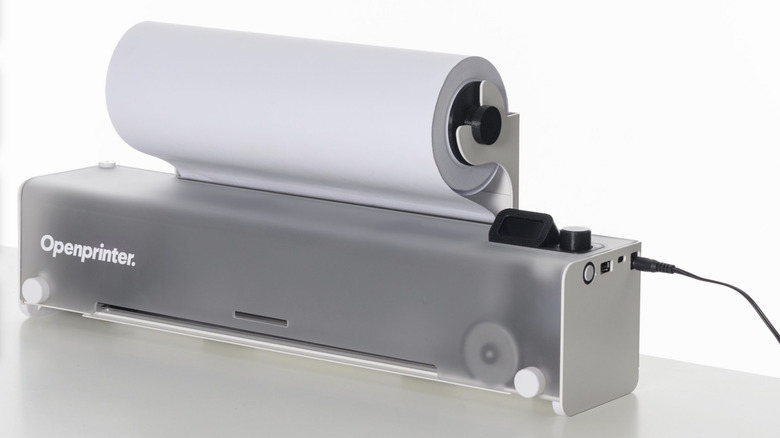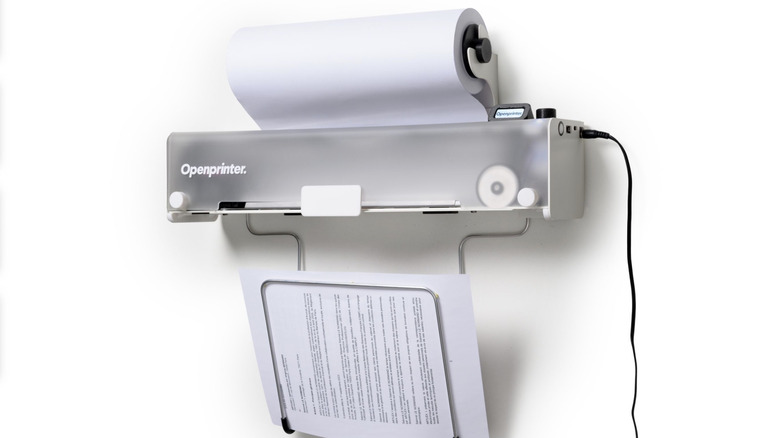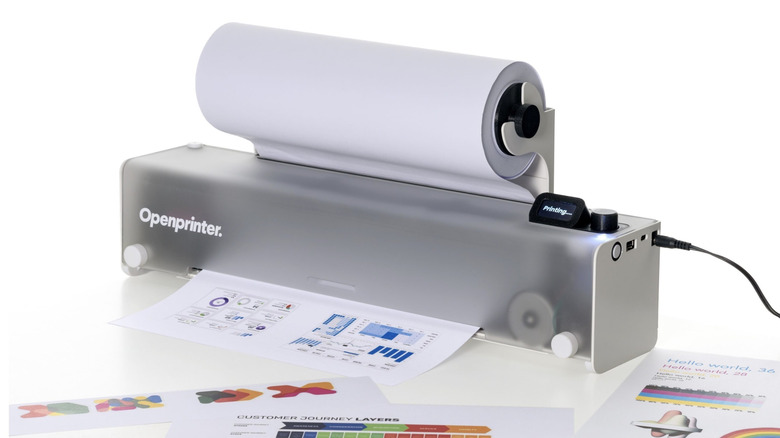Open Printer: The Repairable & Customizable Printer Looking To Replace Your Old Hardware
"Our long-term objective is to make printing a subscription, Intel CEO Enrique Lores said in an interview with CNBC last year, when asked about the idea of warming up to third-party cartridges. "We lose money on the hardware. We make money on supplies," he added, noting that if a customer doesn't print enough, it's a bad investment. Unsurprisingly, HP now has a printer subscription service in place and a bad reputation among customers. Peers like Epson have also followed suit.
But that's only the tip of the iceberg in a sea of printing problems, from printing limitations and software lock-ins to cartridge refueling rules. Open Printer could be the solution to those woes, thanks to its open-source approach and a DIY-friendly design. Currently up for crowdfunding, the folks behind Open Printer claim that their pioneering device relies on "standard mechanical components and modular parts" that are easy to put together, repair, and even modify based on the requirements.
There are no proprietary software drivers involved, and there is no concept of a Digital Rights Management (DRM) lock on this open-source printer. In a nutshell, users won't find themselves locked behind the walls of proprietary cartridges or any similar technological control. "The Open Printer is built for longevity and customizability, ensuring that it remains fully under your control," notes the official project page of the Open Printer. For now, there is no date attached to the project, and currently, there's only a "Coming soon" message plastered across the microsite.
What do you get with the Open Printer?
One of the key objectives behind Open Printer is that it's designed to "never become obsolete." Aside from the promised easy repairability, users can customize it and ensure that this printer is functional in the long run. All the electronics and mechanical design files will be openly distributed under the Creative Commons BY-NC-SA 4.0 license, which means you're free to copy, redistribute, and adapt them. As far as the cartridges go, users have full control over refilling ink and maintaining them for printing duties. A notable element of the printer is its versatile design, which can not only sit on the desk, but also can be mounted on a wall. Another crucial benefit is that you can pick between a bundle of sheets, or paper rolls. It also comes with a built-in cutter that lets users print strips and banners of varied sizes.
Coming to the technical specifications, the Open Printer can handle monochrome black/white prints at 600 dpi, and color documents at 1200 dpi. That's the same peak output as the peak quality you get from HP's laser jet printers in ProRes mode. As far as cartridges go, it takes the HP 63 series models, which can be refilled. The printing speed has not yet been specified. On the computing side of things, it relies on a Raspberry Pi Zero W mainboard and also features a 1.47-inch LCD display. It features USB Type-C and Type-A ports, while wireless connectivity is handled by Wi-Fi 802.11ac and the aging Bluetooth 4.1 standard.
Solving a world of printing problems
The Open Printer can be connected with devices running Windows, macOS, Linux, Android, and iOS. It's the first project of its kind that offers an end-to-end fix for mainstream printing challenges for users. HP, for example, has implemented technical locks that reject third-party cartridges in its printing gear. That means you can't refill an empty cartridge, and the only option left is to get a new one from HP. Then there is the practice of print counting, which renders the cartridge non-functional after a certain number of pages are printed.
In the past few years, enthusiasts have reported methods to bypass the DRM system on printers. These can technically get the job done, but such solutions are not easy to execute for an average user. In its current shape, the printer ecosystem is a pretty tricky situation for the community. HP's requirements, such as keeping the printer always connected to the internet, also mean the company can remotely disable its printer when Instant Ink subscription plans aren't renewed. A solution like Open Printer allows users to liberate themselves from the shackles of subscription, driver hassles, and printing limitations, among other woes.


